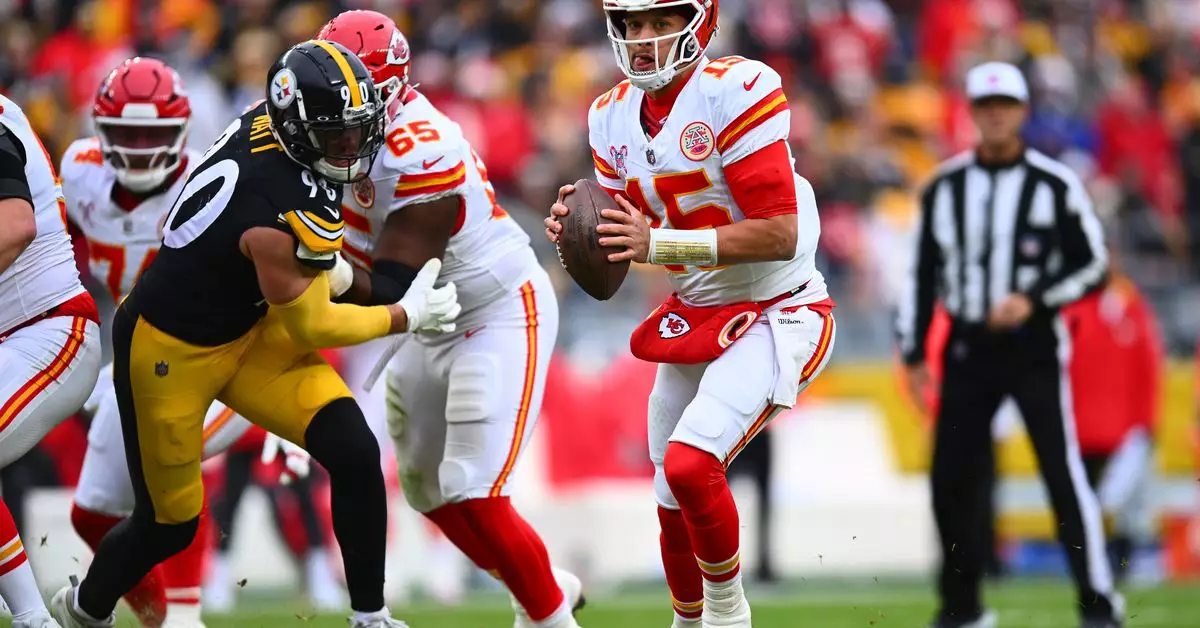On Christmas Day, Netflix transformed the traditional sports viewing landscape by broadcasting two NFL games, drawing in unprecedented audience figures that marked a significant milestone in streaming history. With Nielsen ratings proclaiming this event as “the most-streamed NFL games in US history,” the Kansas City Chiefs versus Pittsburgh Steelers game amassed an average minute audience (AMA) of 24.1 million, while the clash between the Houston Texans and Baltimore Ravens peaked at 24.3 million. Together, these games attracted a staggering total of nearly 65 million viewers, underscoring Netflix’s burgeoning influence in live sports broadcasting.
Technical Resilience Amidst High Demand
A critical challenge for Netflix during this event was managing the heavy traffic from an audience that surpassed 60 million households—an issue it faced the previous month with the much-anticipated boxing match between Mike Tyson and Jake Paul. Thankfully, Netflix’s platforms demonstrated a commendable level of resilience during the NFL games, avoiding any major disruptions amid significant viewer demand.
Adding to the entertainment spectacle, the games featured luminary performances from iconic artists like Mariah Carey and Beyoncé, further engaging viewers. In a move to capitalize on the halftime show’s impressive live attendance of 27 million, Netflix announced plans to release a standalone replay of the “Beyoncé Bowl” performance. This strategic decision not only preserves the cultural moment but also potentially attracts further viewers to the platform, illustrating the interconnectedness between musical entertainment and sports viewership.
The Future of Sports Broadcasting
Looking ahead, NFL’s broadcast deal has secured Christmas Day games on Netflix for at least the next two years, positioning the streaming giant as a permanent player in this prime sports slot. This move could signal a significant shift in how audiences consume sports, as streaming platforms continue to encroach upon traditional broadcasters’ territories.
Interestingly, the NBA, which enjoys a historical monopoly on Christmas Day viewership with its basketball games, managed to achieve notable success despite Netflix’s influence. The league reported its “most-watched Christmas Day in five years,” with an average viewership of 5.25 million per game in the U.S. The NBA’s overall viewership saw an 84 percent year-over-year increase, which highlights how competitive dynamics in the sports broadcasting space can lead to improved outcomes for multiple entities.
Christmas Day 2023 will be remembered as a pivotal moment in the evolution of sports broadcasting, with Netflix’s NFL games not only breaking records but also proving that streaming services are now formidable competitors in the landscape. As audiences continue to gravitate towards flexible viewing options, the traditional paradigms of sporting events may face challenges, compelling leagues to adapt quickly to maintain their relevance in this new reality. Streaming giants like Netflix are no longer just platforms for previously recorded content; they are becoming essential players in live sports, shaping the future of how fans experience their favorite games.


Leave a Reply
You must be logged in to post a comment.